Don’t allow your quality and productivity to rely on uncontrolled variables. Saint Clair Systems temperature control units seamlessly provide the required heating and cooling to achieve and maintain a +/-1°F material temperature at the point of dispense.
Saint Clair Systems temperature control units are totally self-contained, closed-loop, and balanced fluid process control systems. Expandable by
With over 3600 applications under our belt, we have the experience and expertise to streamline your processes and cut costs.
A potential customer was confident their processes were running fine and temperature control would offer minimal benefit.
So, we provided a free analysis of their systems using our proprietary software. We were able to show how differences in paint temperature were leading to excess coating. Our proposed solution saved over $500,000 in coating and solvent usage.
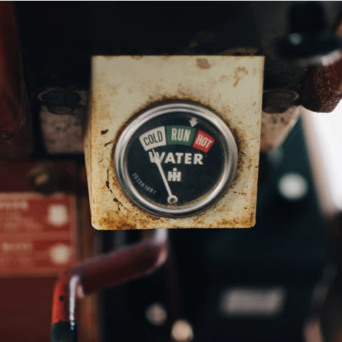
Simple, balanced and efficient, these self-contained, closed-loop systems require neither additional plumbing nor an external water source.
For more than 25 years, Saint Clair Systems has created solutions for many types of applications and in many different industries. The compact, efficient, and economical AT-5900 is used in a variety of applications and offers an easy-to-use upgrade to many dispensing systems.
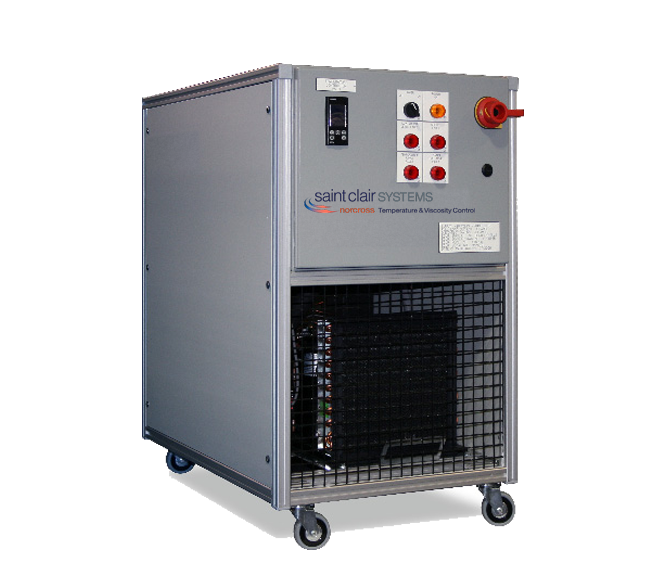
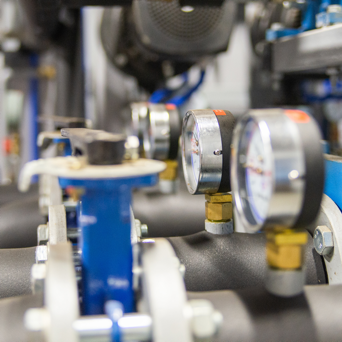
For systems that do not see significant swings in ambient temperature, but benefit from accurate temperature control, our thermoelectric systems offer an efficient and affordable option.
The device contains a Peltier chip. When an electric current runs through the chip, one side gets hot and the other side gets cold. Reversing the current makes the hot side cold, and the cold side, hot.
When dispensing applications contain a large variety of options (as in a multi-color paint system), our solutions can provide temperature control for each circuit. This unit is capable of controlling up to three unique circuits.
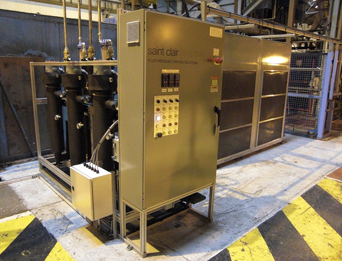
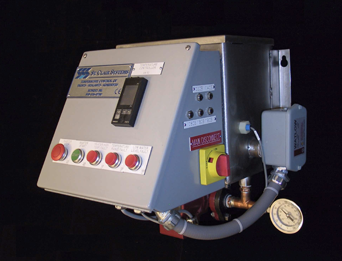
Different from a traditional air heater, these units recirculate heated water to a heat exchanger mounted close to the source of the icing or condensation.
Traditional air heaters use air to transfer heat from outside of the booth to the bell. As air is a poor medium for heat transfer, these traditional air heaters are largely ineffective.
The benefits of these systems include:
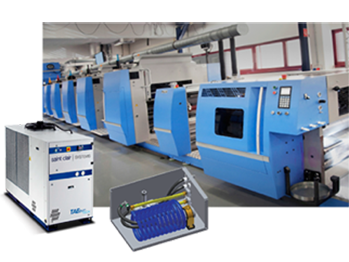
We reported increased stability in striation patterns when applying PVC to aluminum to create a woodgrain finish. We reported significant reductions in color match issues as a result of consistent film build
- Alsco
Steelscape reported reduced “ropiness” when applying Polyester to steel resulting in a finish that “looks sprayed rather than rolled, Steelscape reported 75% reduction in solvent pop due to reduced solvent addition. Steelscape reported 100% reduction in solvents added to primers and backers and 60% reduction in solvents added to finish coats. This was the easiest capital project implementations that we’ve ever done!
- Ron Hurst
- Steelscape
Our system provided the biggest bang for the buck of any capital project so far!
- Jay Michae
- Ternium
Reported solvent reductions between 80% - 100%
- Ternium Shreveport
As part of our ongoing continuous improvement plan at Roush, we decided to take a more aggressive approach to our temperature control in the paint shop. The resulting quality improvement was immediately noted and helped drive our FTC (First Time Capability) up and sustain it where we needed it to be.
- Patrick Henterly
Roush Manufacturing
At Valspar, we formulate our paints to run under a variety of different conditions and process variables. One of the primary variables is the paint temperature, which can vary from 40°F to 100°F based on the conditions at the coil coating facility. This wide swing in temperature can play havoc with both paint viscosity and application setup. Having consistent and targeted paint temperature removes this process variable and its effects from the equation. Additionally, having consistent paint temperature ensures optimal (minimal) usage of expensive reducing solvents to attain the desired viscosity and applied paint film thickness.
- Kent Hatch
Valspar Corporation
“Being able to control the temperature within a narrow range as paint is being used can be very beneficial. The most obvious benefit is a reduced amount of solvent usage. This is not only more economical for the coater but also reduces the environmental impact and health risks to their employees. Reducing the amount of solvent added [provides] additional benefit to the performance of the paint being used. The two major benefits are: Reduced possibility of having solvent popping or blistering problems. The addition of too much solvent to certain paints or certain colors of paints may cause color shifts or gloss changes and by reducing the amount that needs to be added this can be avoided.”
- Herald Cales
Akzo-Nobel